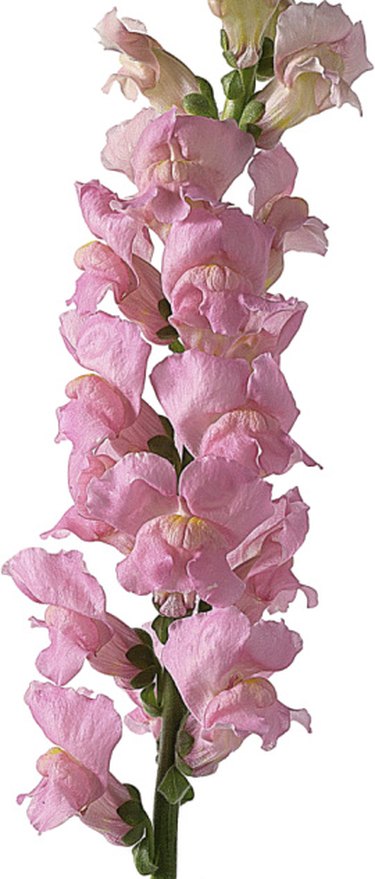
With their showy, long-lasting flowers, snapdragons make their way into many gardeners' list of favorite plants. Placed in a sunny spot, the annuals will bloom throughout the summer and into fall. Typically, snapdragons require little care. However, if you purchase unhealthy seedlings or fail to control moisture levels, your snapdragons can develop black spots on their leaves.
Fungal Infections
Video of the Day
A few of the fungal infections that affect snapdragons include anthracnose, black spot, rust and blight. Although these diseases infect other flowers such as roses and mint plants, most fungi species are specific to a certain plant. In other words, snapdragon black spot is unlikely to cause black spot in your roses. Fungi reproduce by spores that are carried on the wind and in the soil, making it difficult to know where the disease started from.
Video of the Day
Symptoms
Blight and anthracnose produce light spots with dark centers on the snapdragon's leaves. Rust begins as red or brown spots, but when the spores have developed, the spots turn dark. Black spot lives up to its name with round black spots on the leaves. In all cases, the leaves will eventually wither from the infection and fall off the plant. The loss of leaves weakens the plant.
Causes
Fungal infections can be spread when cuttings are taken from already diseased plants. Letting the leaves and soil around the snapdragon remain wet increases the likelihood of a fungal infection. Another problem is growing snapdragons in the same spot of the garden year after year, especially if you've had fungal problems before. Each time you plant snapdragons in that spot, you provide the fungi with their preferred host.
Solutions
Watering early in the morning so your snapdragons and the soil have time to dry is one of the best ways to prevent fungal infections. When purchasing snapdragons, inspect the plants for any sign of spots on the leaves. If you see any, buy your snapdragons elsewhere. If your plants do succumb to a fungal infection, pull them out and dispose of them. Avoid planting snapdragons in the garden area where the infected plants were for a couple years. Fungicides help, but don't solve the problem.